
15 years ago I published my first article. It was about the Mausoleum of Imam al-Shafi'i in Cairo, built in 1211 by Sultan al-Kamil, nephew of the great Saladin. Now it is again resplendent thanks to an exquisite restoration by May al-Ibrashy & team. A story for #WorldHeritageDay 
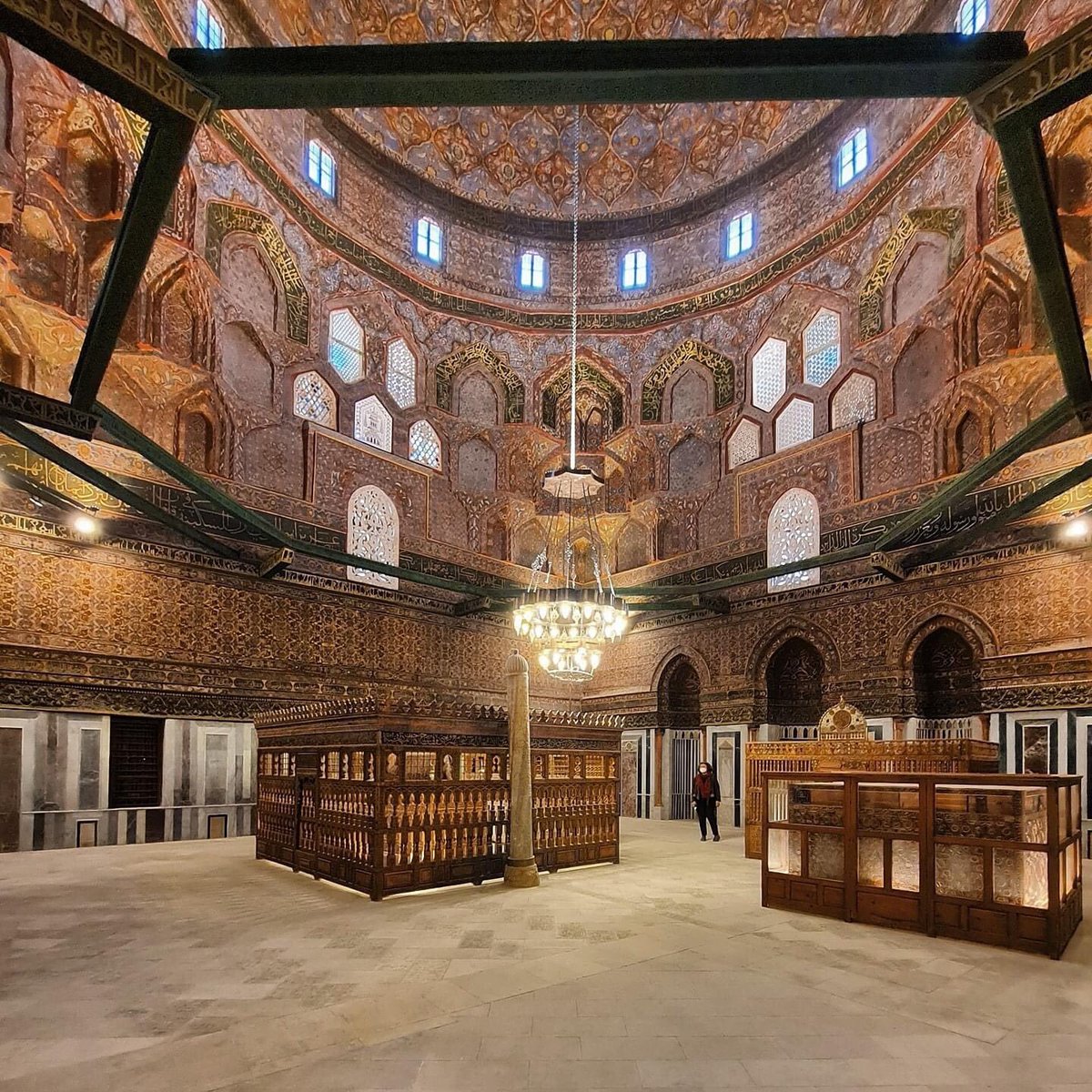
In 1180, Saladin had vanquished both the Fatimids and the Crusaders, and his first construction in Cairo - even before building the Citadel - was here, at the burial place of the Imam al-Shafi'i, founder of one of the Sunni legal schools and long a beloved figure in the city. 
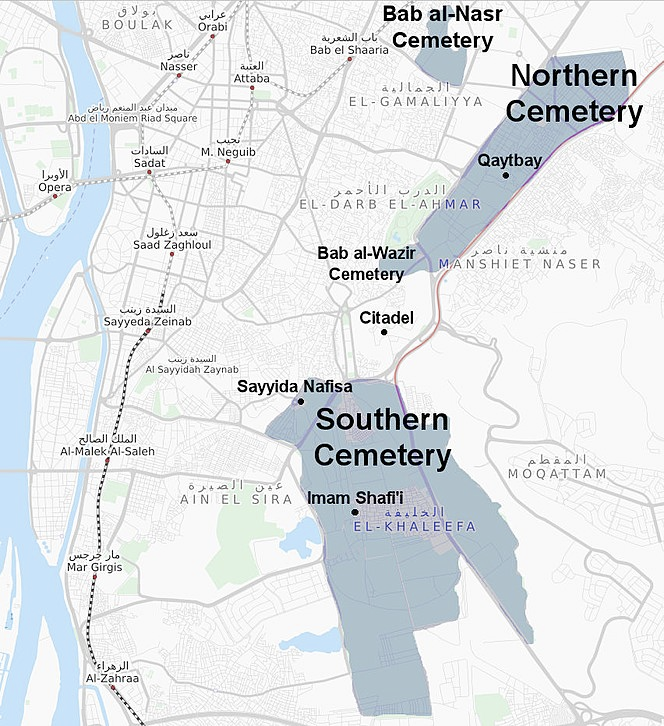
Imam al-Shafi'i's mausoleum was located in the most southerly of Cairo's ancient necropolises, often called the Cities of the Dead, though then, as now, they were in fact filled with life. theislamicmonthly.com/living-amongst… 

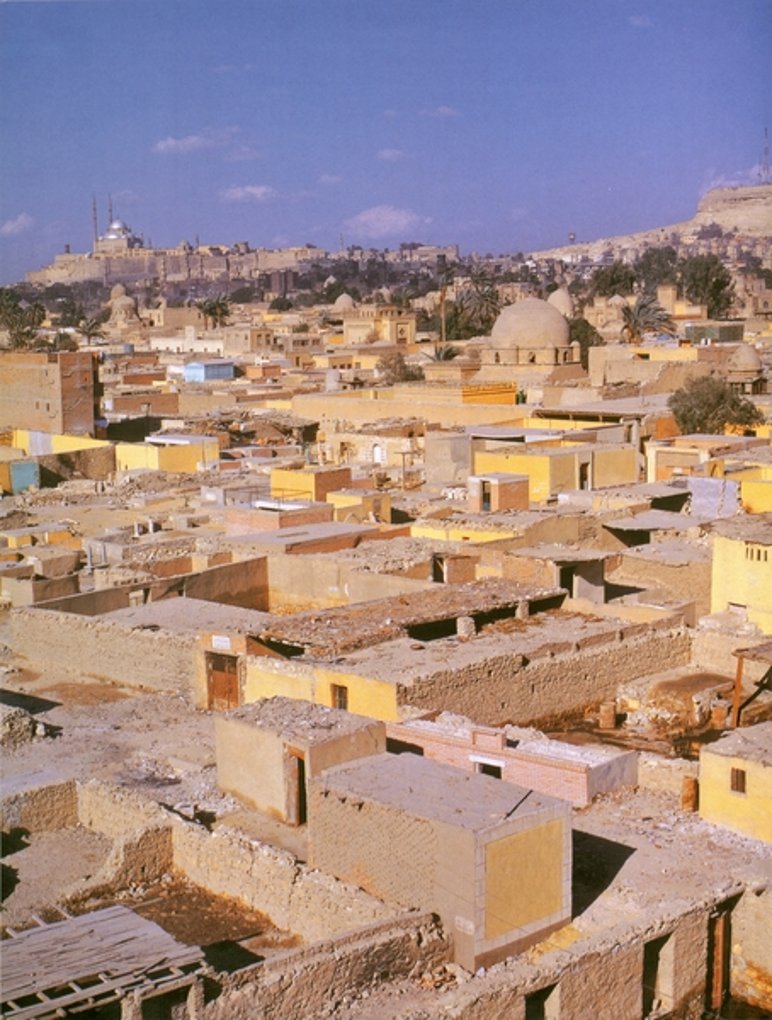
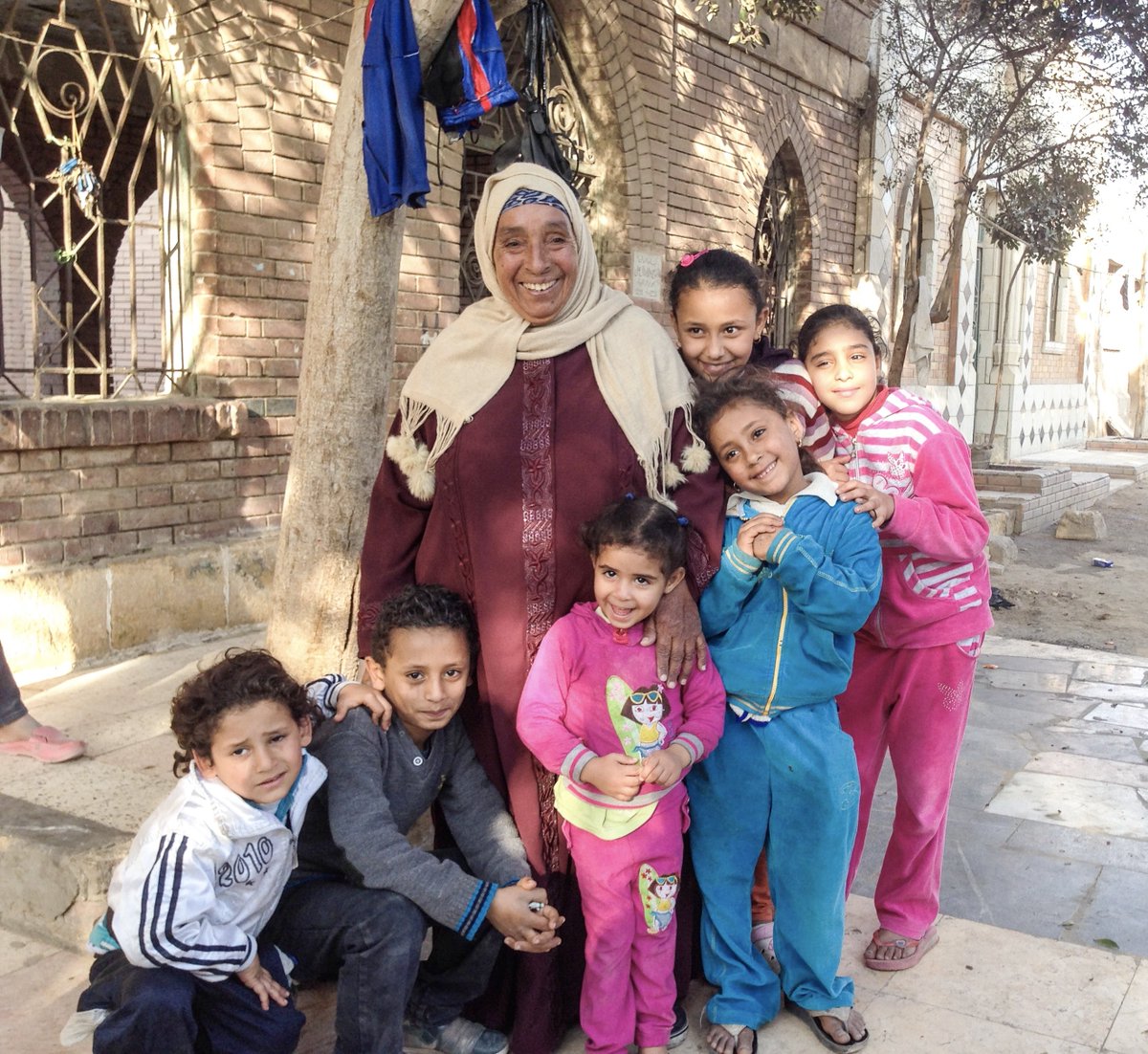
The cemeteries are replete with holy sites of pious visitation (ziyāra), and they are also a home for hundreds of thousands of residents of the city, who live among the tombs and serve as their caretakers. Their story was told in Sérgio Tréfaut's 2009 film
Saladin founded a great madrasa complex and for the tomb, an exquisite teak cenotaph. It's a masterpiece of medieval carving and joinery, signed by "'Ubayd the carpenter, known as Ibn Ma'ali", who implored God to have mercy on him and his fellow carpenters. Photo: Bernard O'Kane 
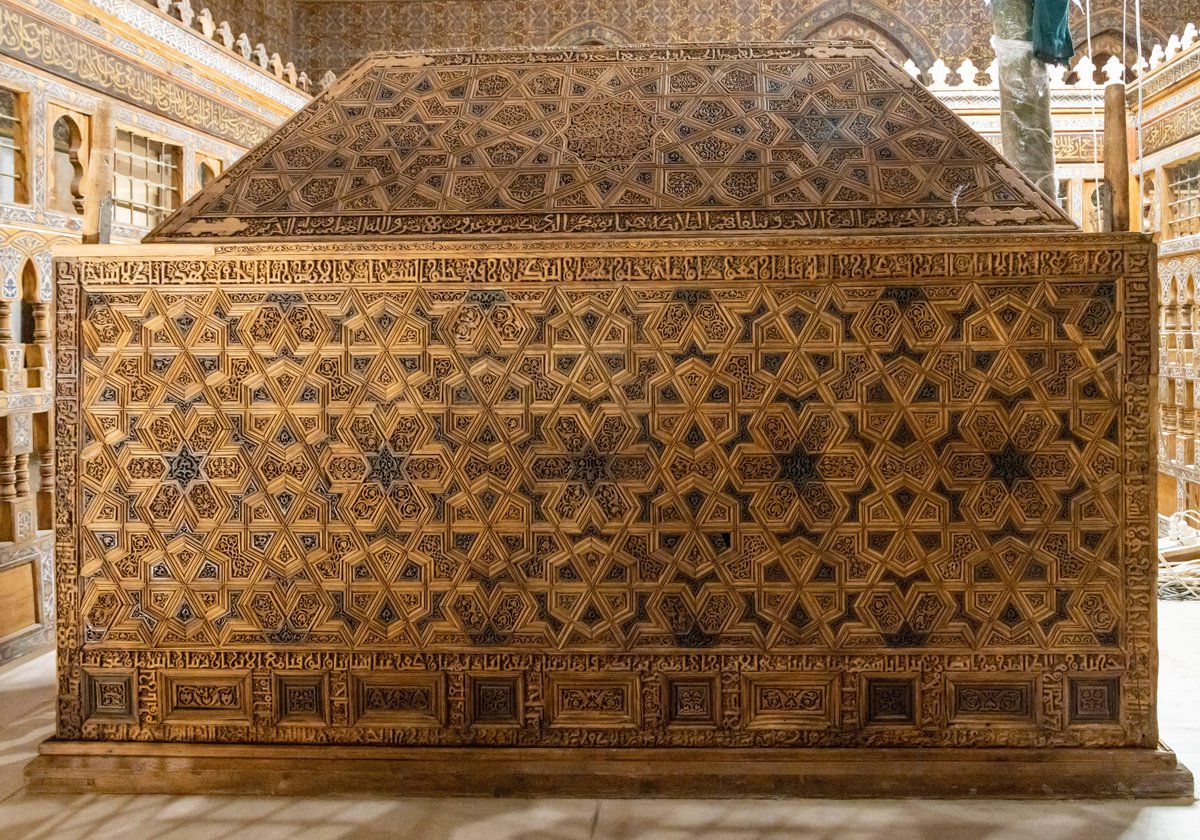
And we definitely need one more shout out to the woodworker Ibn Ma'ali, whose work is still absolute perfection after 843 years.
Photo: Ahmed Mansour
Photo: Ahmed Mansour
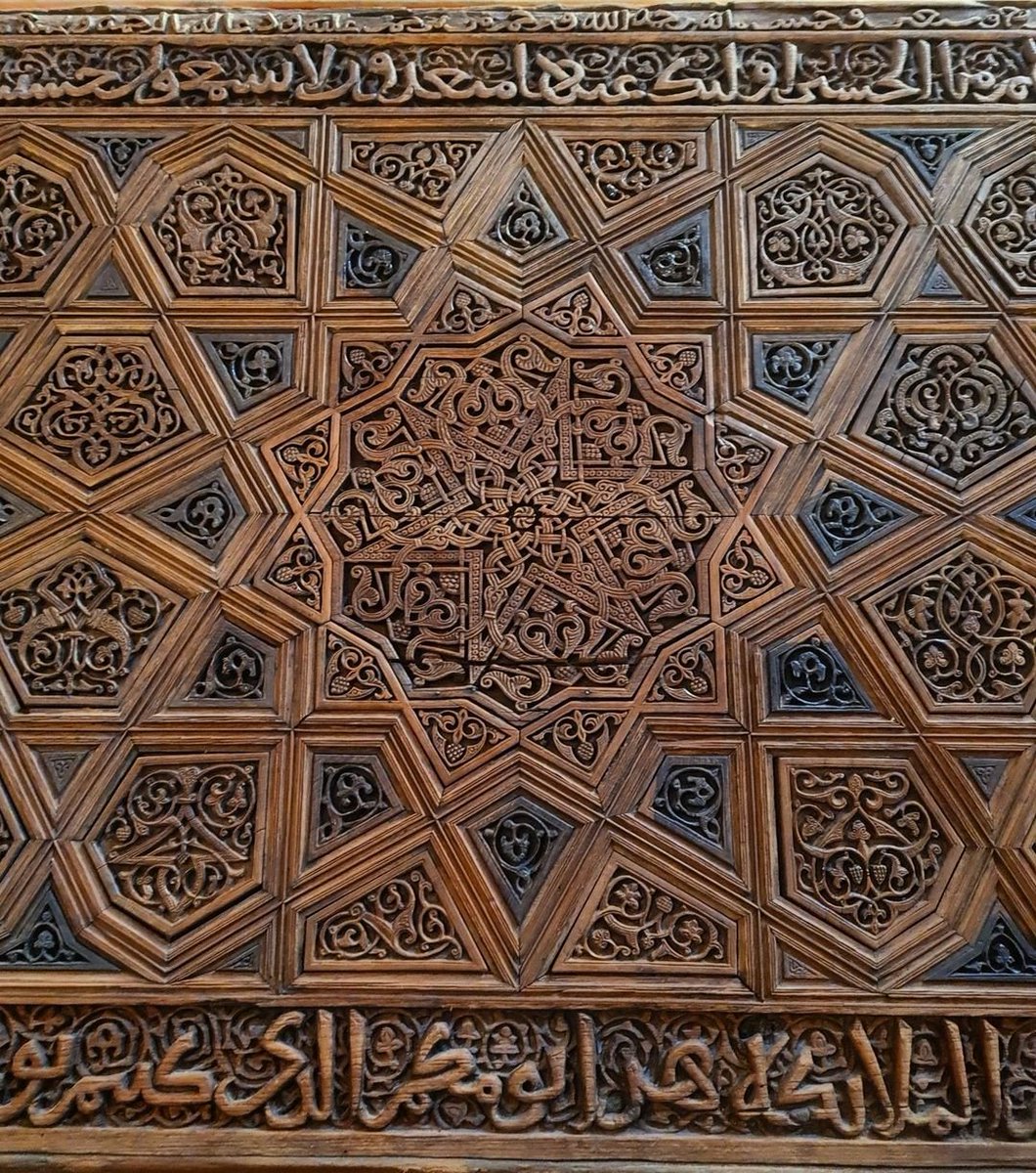
Saladin was initially reluctant to expend so much money on the madrasa, but he was *literally* browbeaten by a pious and ascetic Ash'ari sheikh named Najm al-Din al-Khabushani, who is the only one credited in the foundation inscription. Al-Khabushani was kind of an intense guy... 






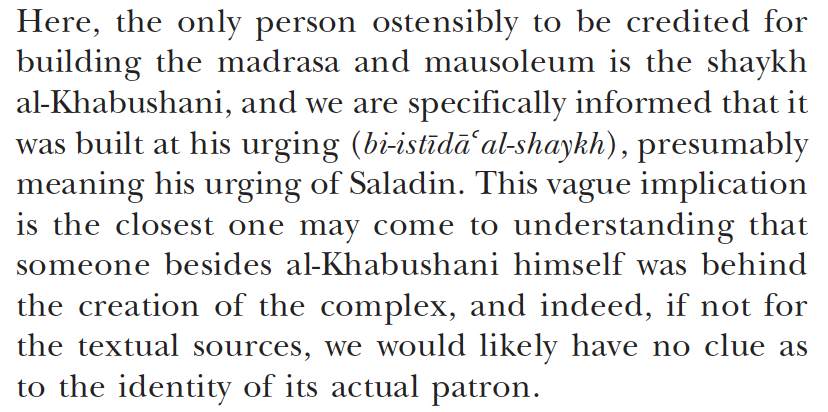
A few years later in 1211, al-Kamil enlarged the mausoleum with an astonishing dome - still today, the largest dome in Egypt and one of the largest domes in the Islamic world, just slightly smaller than the Dome of the Rock in Jerusalem. Photo: me! 
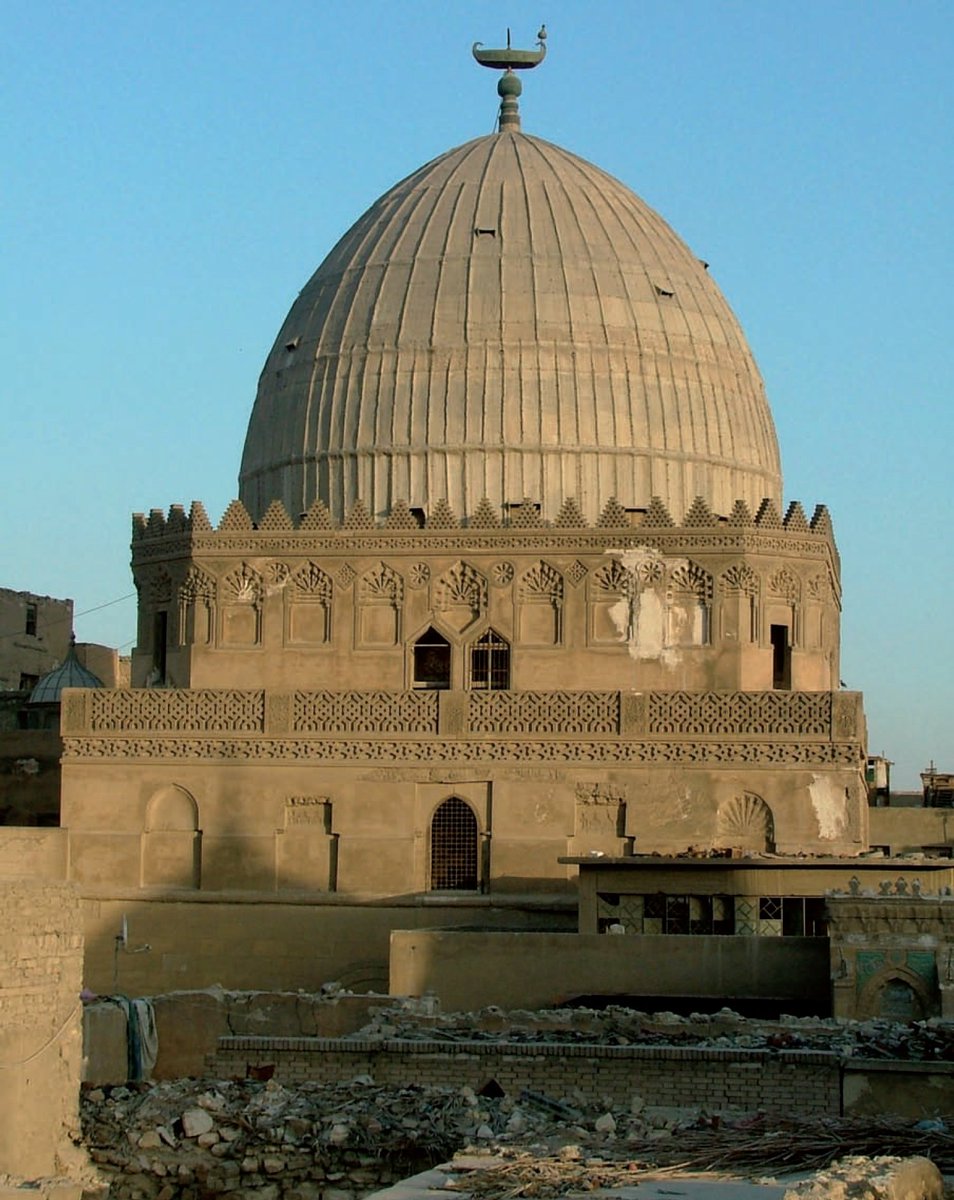
Sailing through the sky atop the towering dome is a boat, unique in Islamic architecture. It is said that the building's waqf provided for it to be filled with seeds for birds, and that when Saladin was asked about it, he replied "beneath this dome lies a sea of knowledge". 

The vast, hushed space is always filled with pious visitors. They come to pray, to partake of the Imam's baraka (blessing) and to write him notes, letters, and entreaties. It's an immense, solemn, and moving space, replete with the dignity and history of Cairo's rich Islamic past 


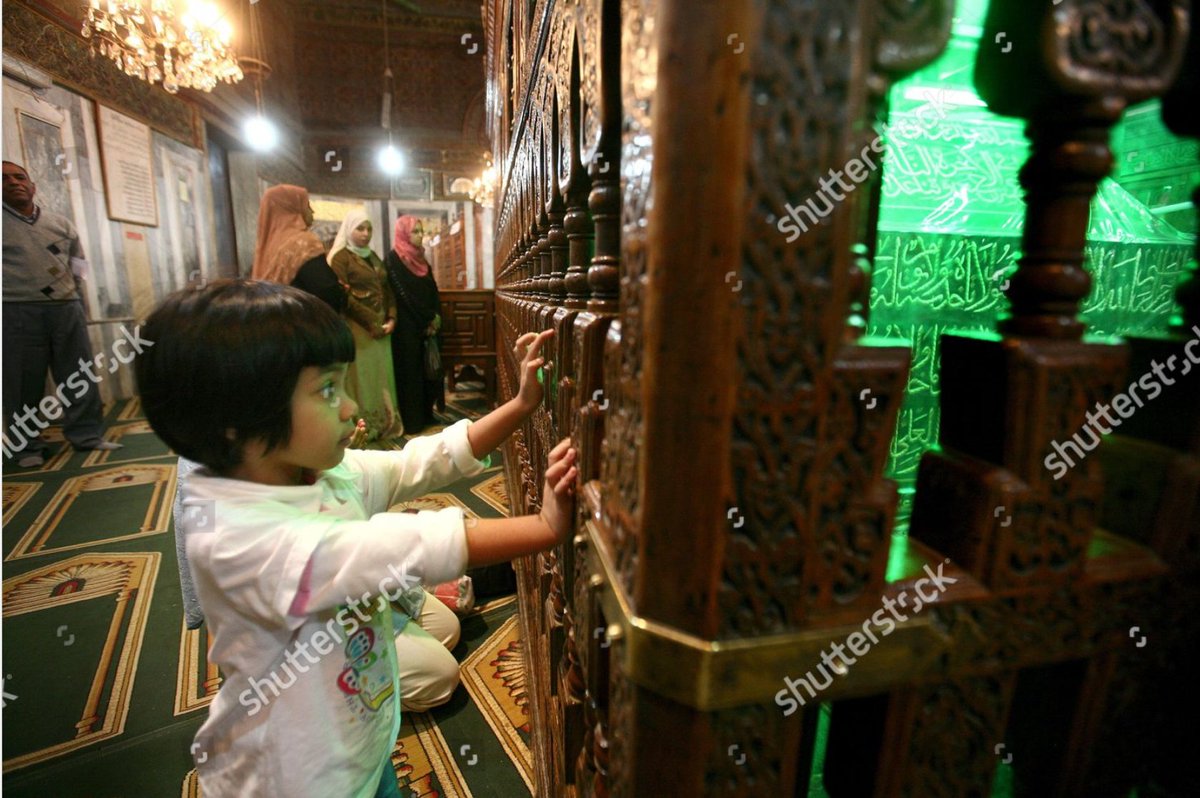
Yet the mausoleum, like many of the medieval monuments of Cairo, was in a precarious state. Its once-exquisitely-painted tiered muqarnas domes and golden-calligraphed wooden brackets had faded to a dark, dull brown through years of exposure to the city’s notorious air pollution. 

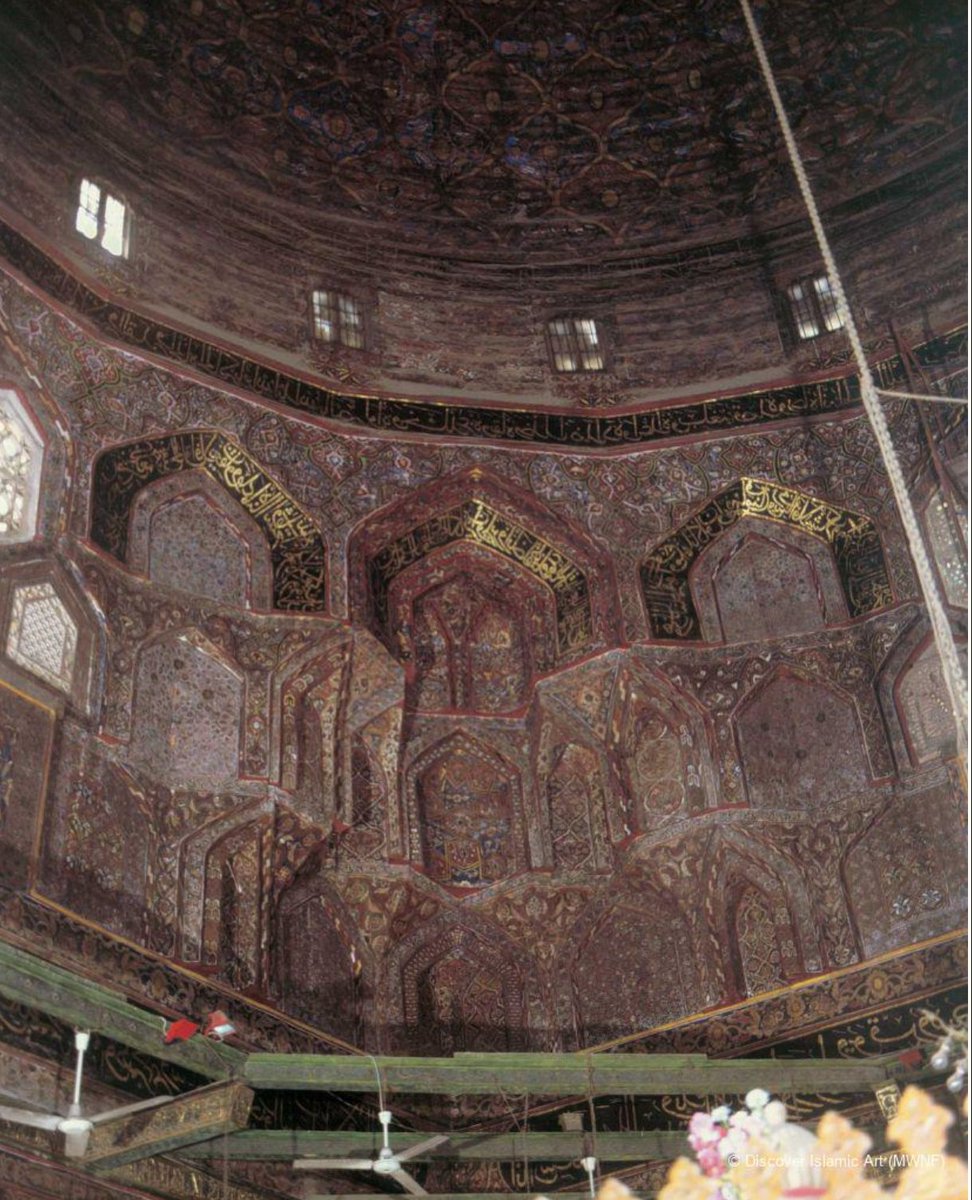
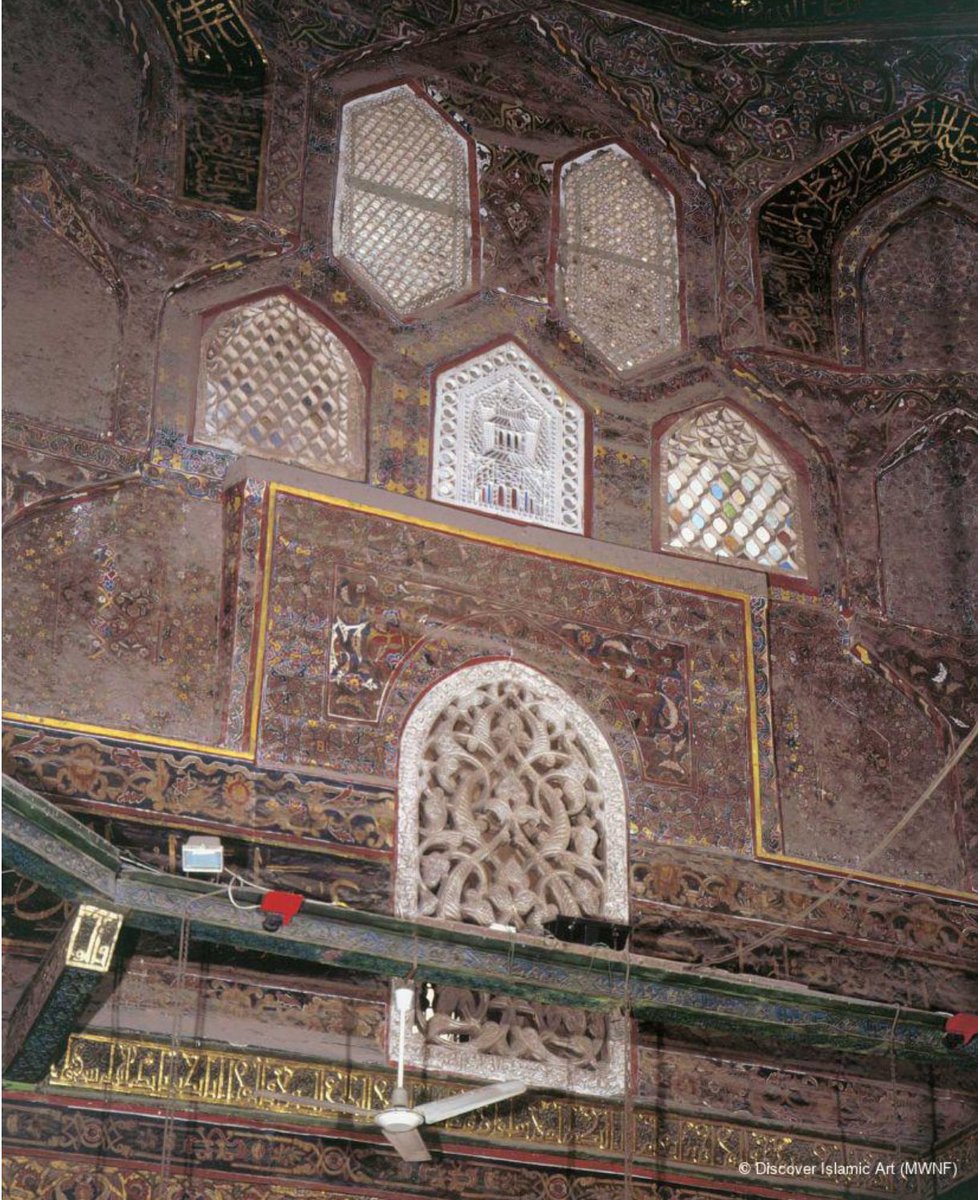
There is never enough money to preserve Cairo's extraordinary medieval architectural patrimony - there are so many buildings. I just finished an article on Mamluk architecture and well, imagine a city with nearly a thousand medieval cathedrals preserved. That's Islamic Cairo. 
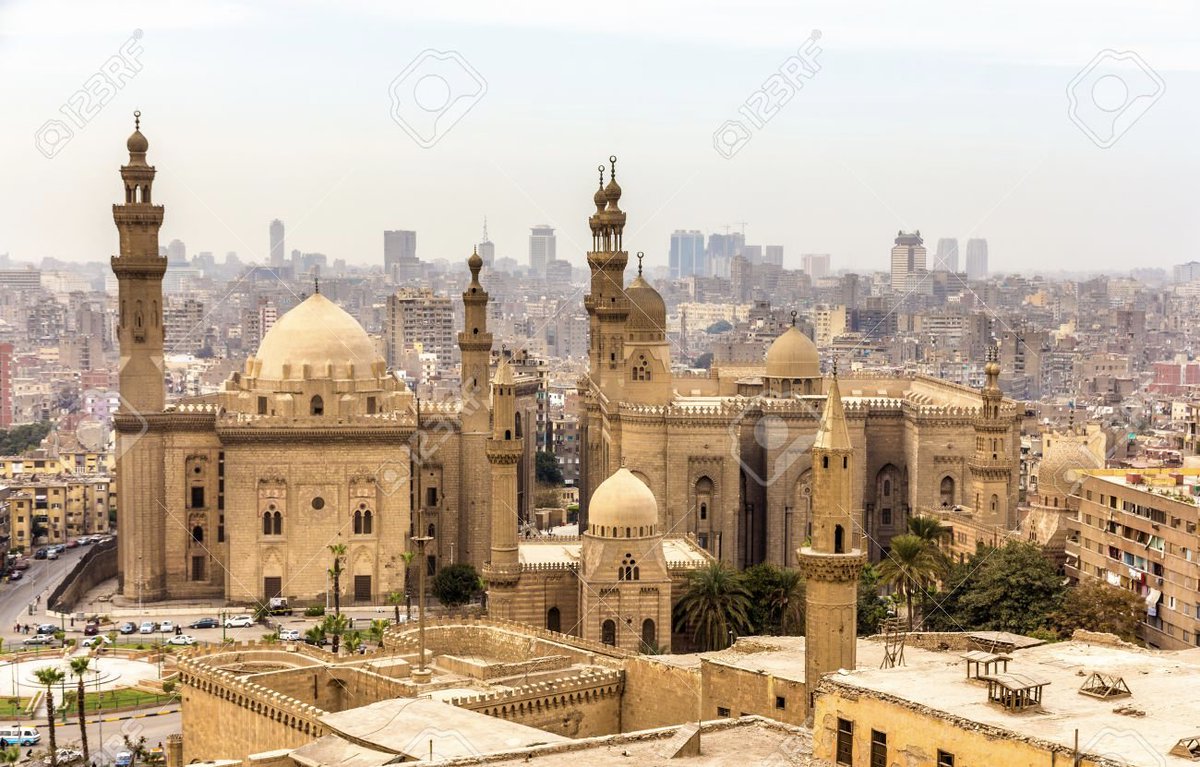
Egypt tends to focus on its ancient Pharaonic past because that's where the tourist dollars are, and of course Egypt has many other challenges. Preserving Cairo's astonishing wealth of medieval architecture falls pretty far down the line most days. bbc.com/news/world-mid…
So imagine my absolute delight when I opened my laptop yesterday to see the interior glowing with a soft, shimmering luminescence it has not known for centuries, and to learn that May Al-Ibrashy and her team have just completed the renovation of the mausoleum. 


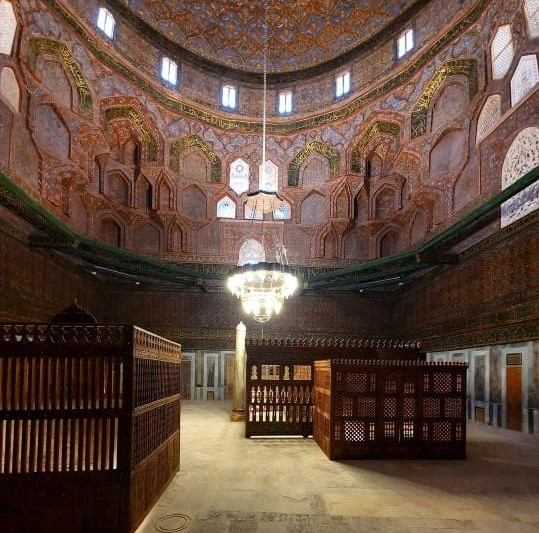
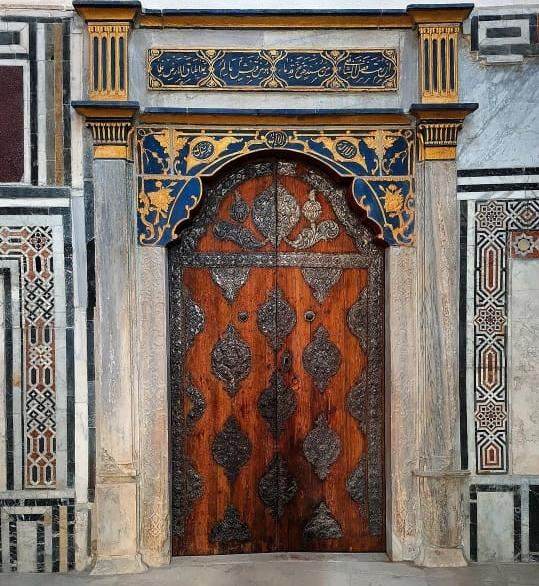
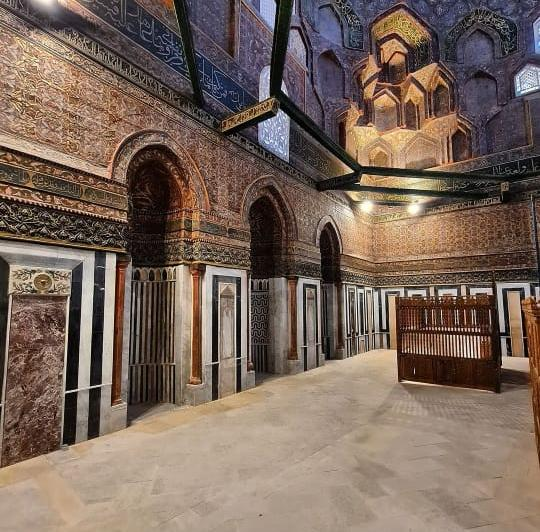
It's an outstandingly careful, sensitive, and elegant renovation - behind all this beauty there lies ten long years of struggle: with permits, with the indifference of authorities, with fundraising, and with overseeing the completion of the work itself. facebook.com/Megawra/videos…
I am in awe of those who are working to save Cairo's medieval past. Thank you. What a gift to the people of Egypt. 🙏
Photo: Ahmed Mansour
Photo: Ahmed Mansour
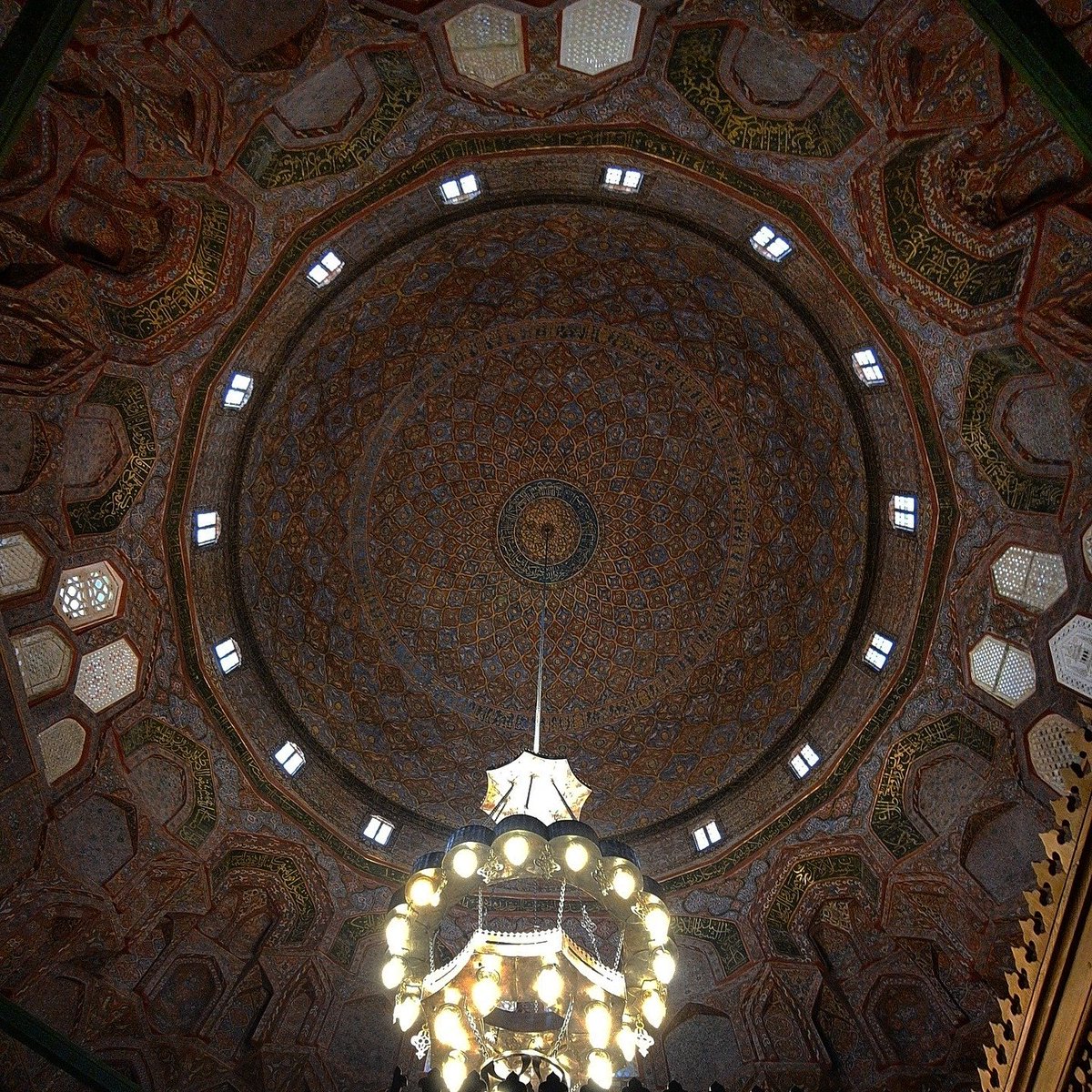
If you'd like to read my article about the Mausoleum of the Imam al-Shafi'i, it's available on @archnet: archnet.org/publications/6…
And to learn more about Imam al-Shafi'i and his place in the hearts of the people of Cairo, highly recommend @kecia_ali's biography! simonandschuster.com/books/Imam-Sha…
The restoration of the mausoleum is part of Athar Lina, a community-focused heritage initiative that aims to establish modalities of citizen participation in heritage conservation based on an understanding of the monument as a resource, not a burden. atharlina.com/projects/al-im…
It was funded by the @USEmbassyCairo's Ambassadors Fund for Cultural Preservation and was implemented by @Megawra.
https://twitter.com/USEmbassyCairo/status/1383840391426830338?s=20
May al-Ibrashy's participatory, community-focused heritage projects were highlighted in this article in @ahramonline on Monday. Her heroic, community-centered work to preserve Cairo's heritage is an inspiration. This is how it should be done. english.ahram.org.eg/NewsContent/32…
Yet despite designation as a @UNESCO world heritage site, Cairo's historic cemeteries are still under threat from highway construction by Egypt's @AlsisiOfficial gov't, which has bypassed the recommendations of Egyptian heritage organizations. madamasr.com/en/2021/02/08/…
One of the new flyovers has already been constructed, and directly impacts the historic integrity of the cemetery near the Mausoleum of Imam al-Shafi'i. Despite international condemnation, the @AlsisiOfficial government moves forward with its plans. washingtonpost.com/lifestyle/high… 

Egyptians have voiced their disapproval:
https://twitter.com/stephenniem/status/1357729786852950020
That pressure has paid off in the past few months, forcing the government to stop the demolition of two historic areas, al-Hattaba and Arab al-Yasar, just south of the citadel. Athar Lina already has a @FordFoundation project to develop al-Hattaba: atharlina.com/projects/studi…
In the end, we can all play a role in the preservation of cultural heritage. These projects show us an inspiring way forward: in community-based preservation approaches, in publicity and pressure from the public, and in the hard work of a talented team of heritage professionals.
A detailed overview of the history of the building and of the restoration process can be found here: khalifa.atharlina.com/monuments/al-s…
• • •
Missing some Tweet in this thread? You can try to
force a refresh


